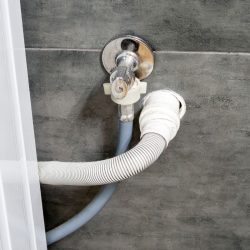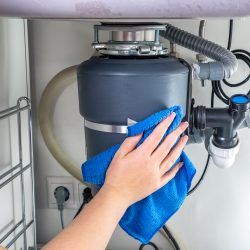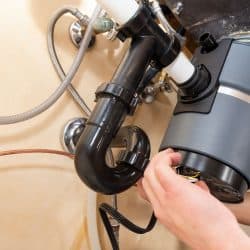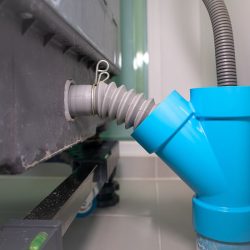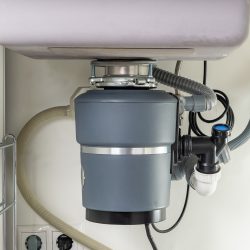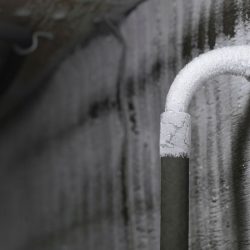A dishwasher is a convenient machine in the kitchen. What should you do when the dishwasher hose keeps kinking or gets tied up? What can be the reasons for the problem? We did research to help you with this issue.
A dishwasher hose can kink due to the ridged plastic its made of. The plastic can develop kinks and also break, leak, and clog up. Loose connections and pressure on the hose can also cause kinks.
You should make sure the hose is secure, tightly connected, and straight. Also, install your hose on a high loop which is helpful for proper water flow. A worn-out hose will need to be replaced.
An entangled or kinked drain hose affects the overall performance of your dishwasher. Immediately fixing and checking it will save you a lot of hassle and money. Keep reading to get a step-by-step guide on avoiding a kinking drain hose and, if necessary, replacing it.
Why Does My Dishwasher Drain Hose Keep Kinking?
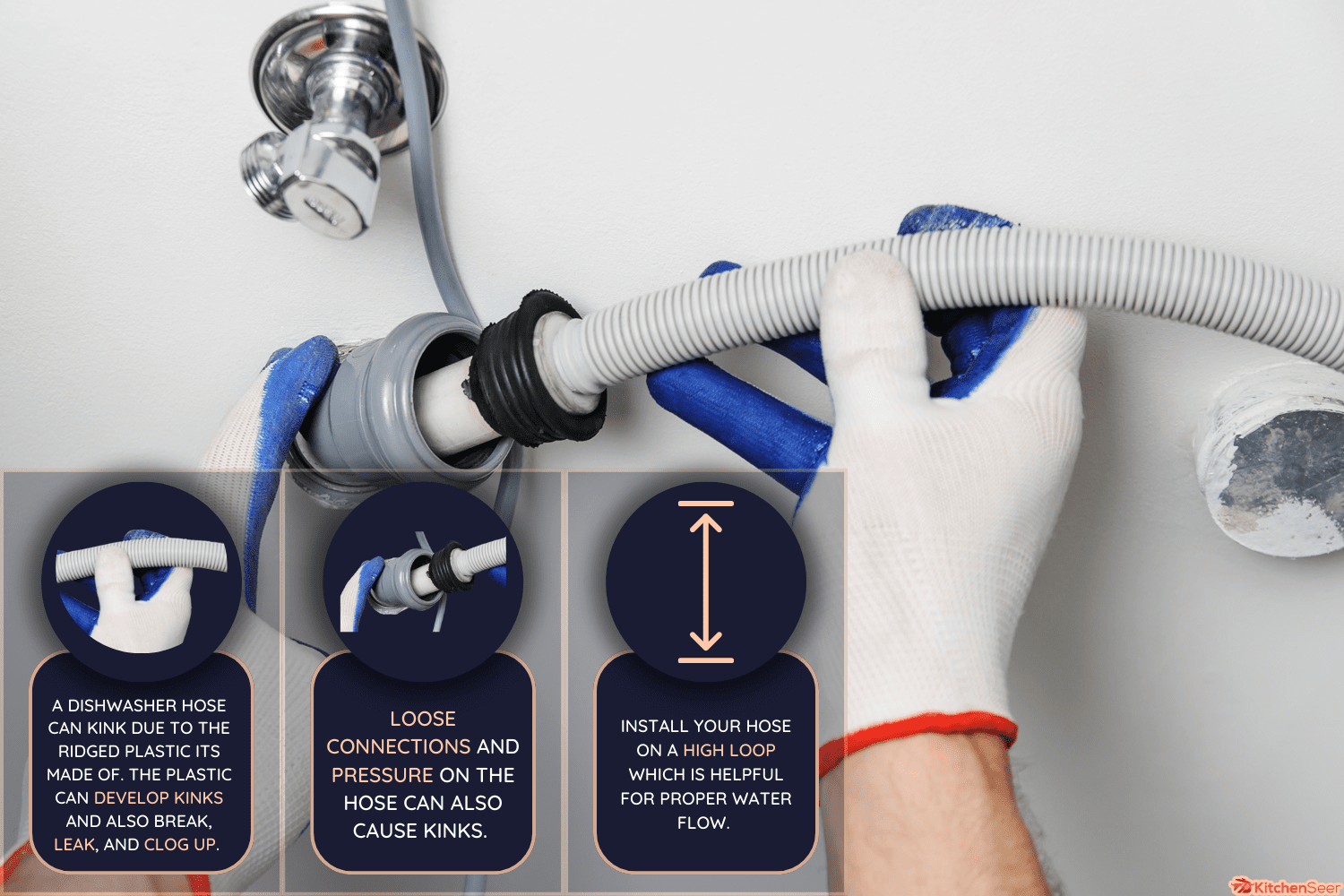
The dishwasher drain hose is an integral part of the unit. It is also one of the most sensitive parts. Here are the reasons why drain hoses develop kinks:
- Material. Most drain hoses are made of ridged plastic, which makes them vulnerable to breaking and worn out.
- Bent hose. A bent hose puts too much pressure on an area of the hose, causing it to loosen or pop.
- Crowded storage. Heavy objects stored near the dishwasher can press the soft drain hose, leading to kinking.
Fixing a kinking dishwasher drain hose is not difficult, and you should be able to do it yourself. Make sure to free the space around the drain hose to avoid further damage or bending.
Do a regular check of your hose for any kinks or damage. Keep a straight hose connection. You can also purchase a repair kit with replacement parts such as O rings, retainers, or grippers.
Check out this dishwasher drain hose on Amazon.
Dishwasher Drain Hose Replacement
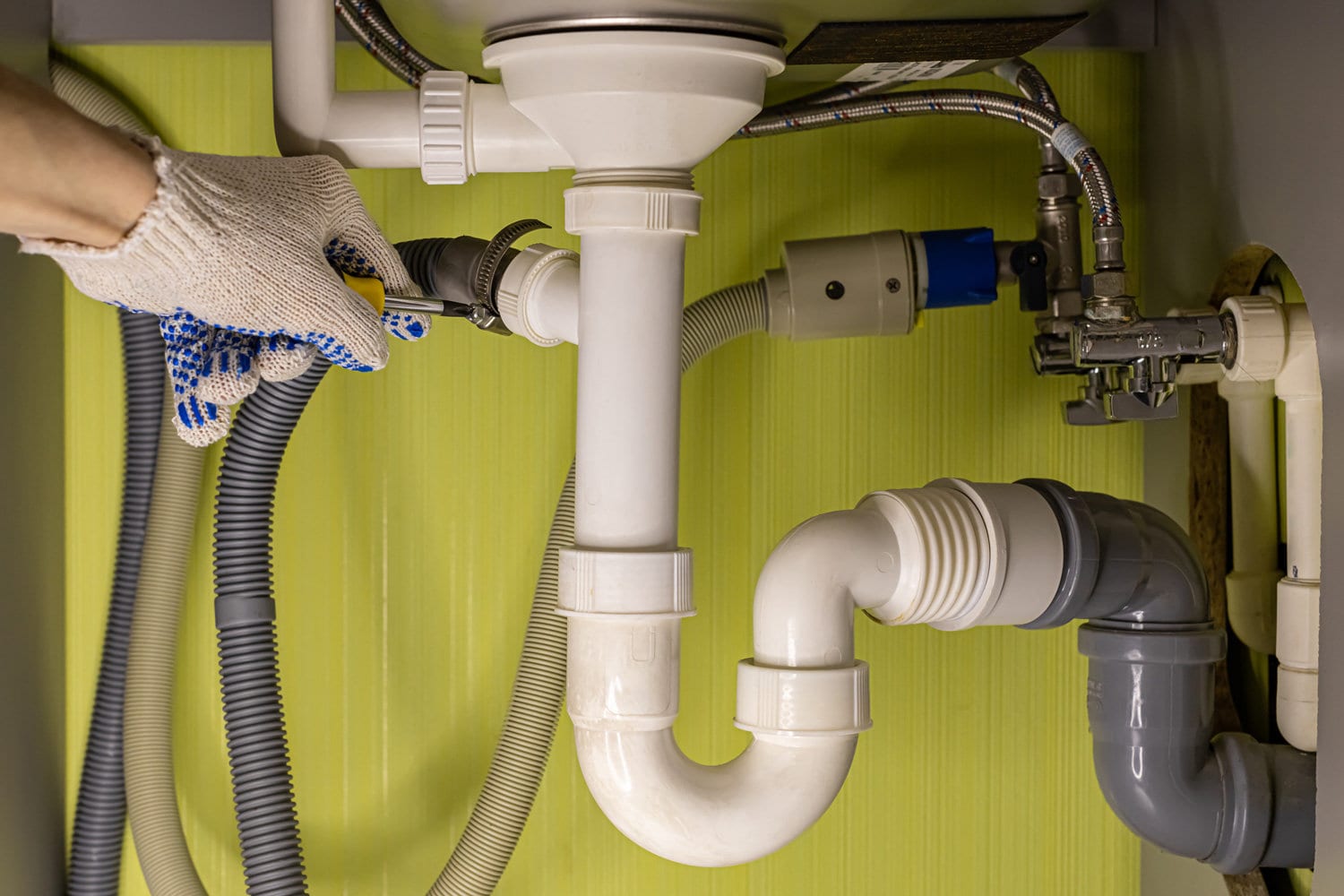
Tools To Prepare
As we mentioned above, a worn-out drain hose should be switched out for a new one. In replacing a dishwasher drain hose, you should start by gathering the needed materials. Here is what you will need:
- A new drain hose
- A set of pliers
- A nut driver
- A crescent watch
- A bucket
- A drill based on the sink cabinet make-up
- A screw-on pipe strap for high loop installation
Check out this 7-in-1 nut driver on Amazon.
Here are the easy steps for replacing your damaged drain hose:
- Shut down the circuit breaker or power source of the dishwasher and the water valve of the entire water connection.
- Detach the drain hose by unscrewing the clamp or clip securing it. Prepare a bucket to catch the water residue in the hose.
- Unbolt the kickplate or the bottom panel of the unit. Open the electrical junction case and spin the wire connectors or wire nuts to remove to release the power supply.
- Detach the water supply to the dishwasher with a crescent watch or pliers to twist the supply line nut.
- Unscrew the brackets connected to the dishwasher and take them out to check and examine the entire hose.
- Unscrew the drain hose from the pump and all other nuts securing the entire hose as it finds its way out from the dishwasher. Remove the hose after loosening all the securing nuts.
- Detach the hose from the sink connection. It can be at the sink drain piping or the air gap. Tug the hose out from below the sink.
- Attach the new drain hose from the dishwasher pump, fitting the hose end tightly above the outlet and tightening the clamp or clip encircling it to secure. Attach as much as possible through the hole connecting to the sink. Afterward, return the dishwasher below the station.
- Carefully draw the rest of the hose along the hole and into the sink case. Fasten the hose at a towering high loop option to avert counterflow. You can secure it with a screw-on pipe strap together with a screwdriver and elbow grease.
- Attach the drain hose to the air gap, sink tailpiece, or garbage disposal with a clamp or clip. Reattach the electrical wires to the dishwasher junction case and replace the kickplate. Switch the power and water lines back on.
Check out this pipe strap clamp on Amazon.
Dishwasher Maintenance
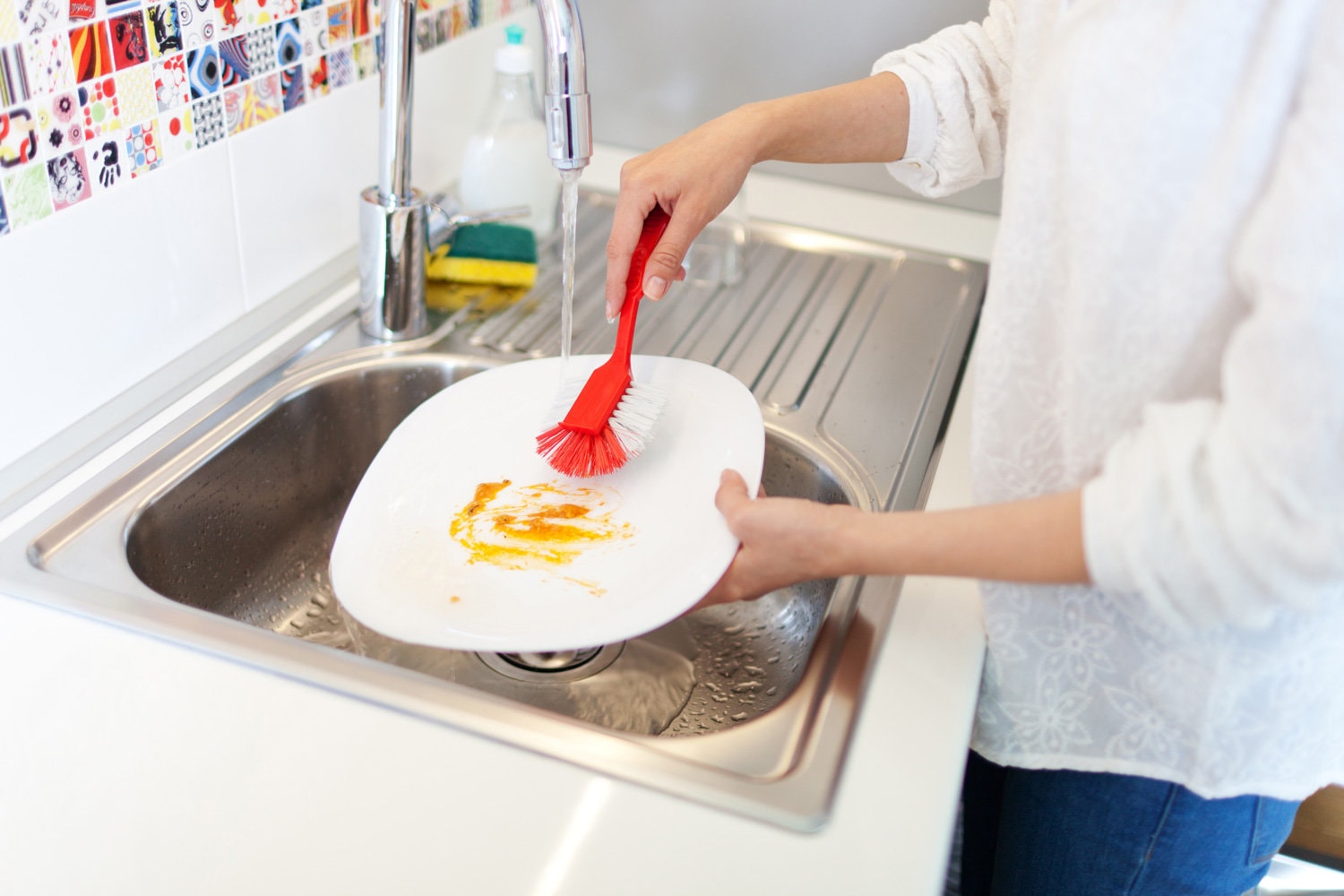
A dishwasher hose needs to be maintained and cleaned, as it is used frequently. Pre-rinsing or scraping your dishes is an important part of taking care of your dishwasher drain hose.
Cleaning the filter every month to avoid clogging is also helpful. The filter is at the base or foot of your unit. Use a soft brush to remove food particles or waste from the filter. Maintaining a fresh-smelling dishwasher is not hard to do and will make your life easier.
Here are more ways to thoroughly clean your dishwasher:
- Empty the garbage disposal. Loosen any clogs and run the disposal. Clear the garbage disposal for the water to drain completely.
- Clean the air gap. Keep the air gap clean to avoid water from moving back to the dishwasher. Take off the air gap cap and remove any waste.
- Avoid Clogs. A clogged dishwasher is simply not useful. To get rid of clogs, pour a mixture of vinegar and baking soda into the dishwasher bucket and wait for 15 minutes. Then run boiling water into the bucket.
Reasons A Dishwasher Keeps Clogging
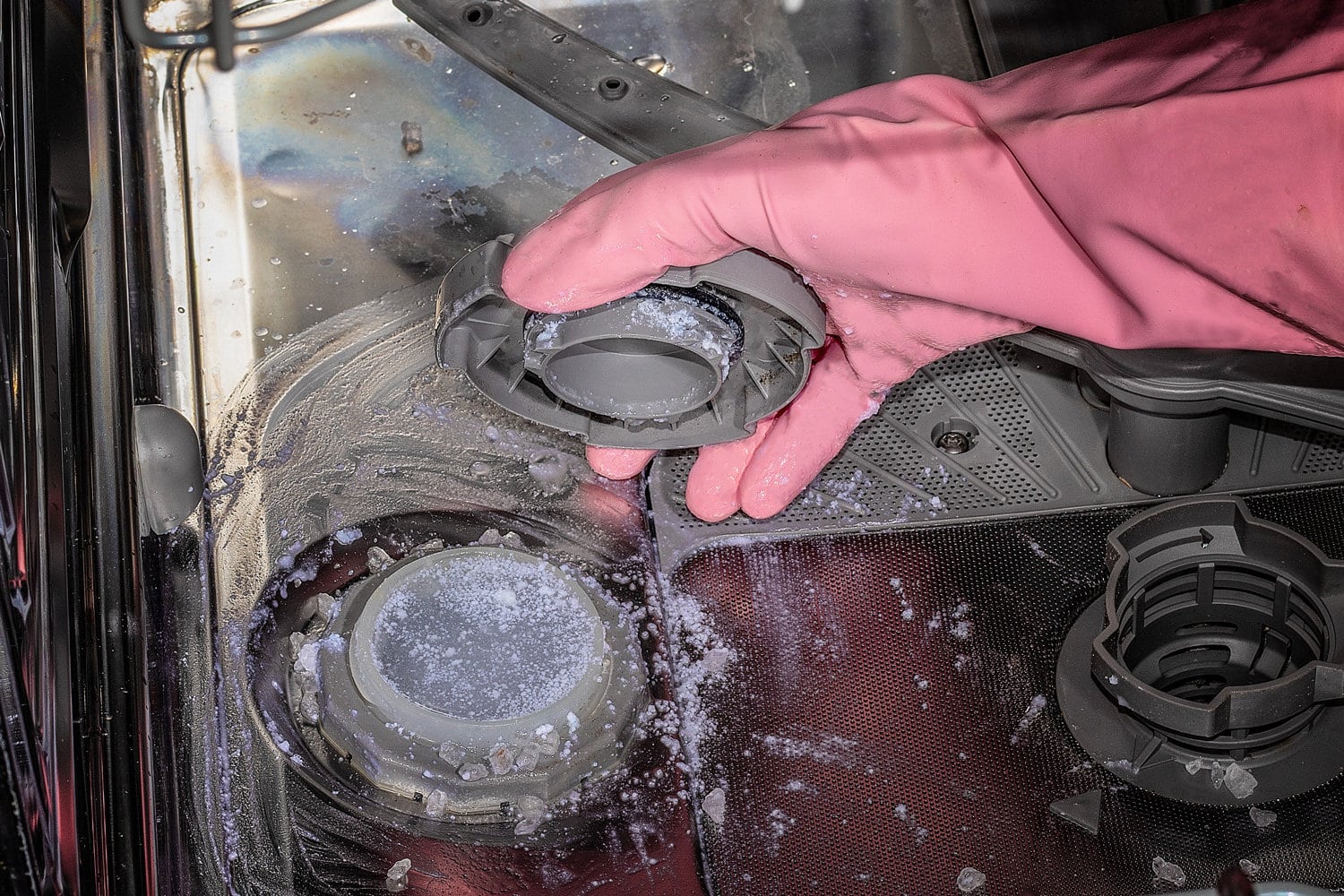
A clogged dishwasher can be caused by improper installation and poor maintenance. However, damage can also cause clogs.
Call a professional plumber if your dishwasher clogs continuously, and the problem seems serious. The possible reasons behind your clogged dishwasher are:
- Problems with garbage disposal installation
- A clogged hose
- A dirty or clogged air filter
- A clogged drain line
- A damaged sewer line
Should A Dishwasher Drain Hose Be Looped?
Yes! Looping a dishwasher drain hose can be very helpful for a number of reasons.
The loop position will help to ensure that the wastewater drains correctly. It will help keep water from the sink drain or garbage disposal from returning to the dishwasher.
Are All Dishwasher Drain Hoses The Same Size?
Hose sizes can vary, but the most common size is 1/2 inch. A rubber boot is attached to secure other types of connections at the end of the hose. You can adjoin 1/2- , 3/4- , and 1-inch sizes.
Generally, boots have colored indicators so you know where to cut the proper widths.
Where Should You Drill To Install A Dishwasher Drain Hose?
You should drill at the back of the cabinet. Using a 1 1/2 inch spade bit and drill, make a 1 1/2 inch hole as high as possible without touching the sink. This is the hole for the drain hose.
Using a spade bit, drill a 3/4 inch hole in an accessible location. This is the hole for your hot water supply pipe.
Check out this spade drill bit on Amazon.
Where Is The Air Gap On My Dishwasher?
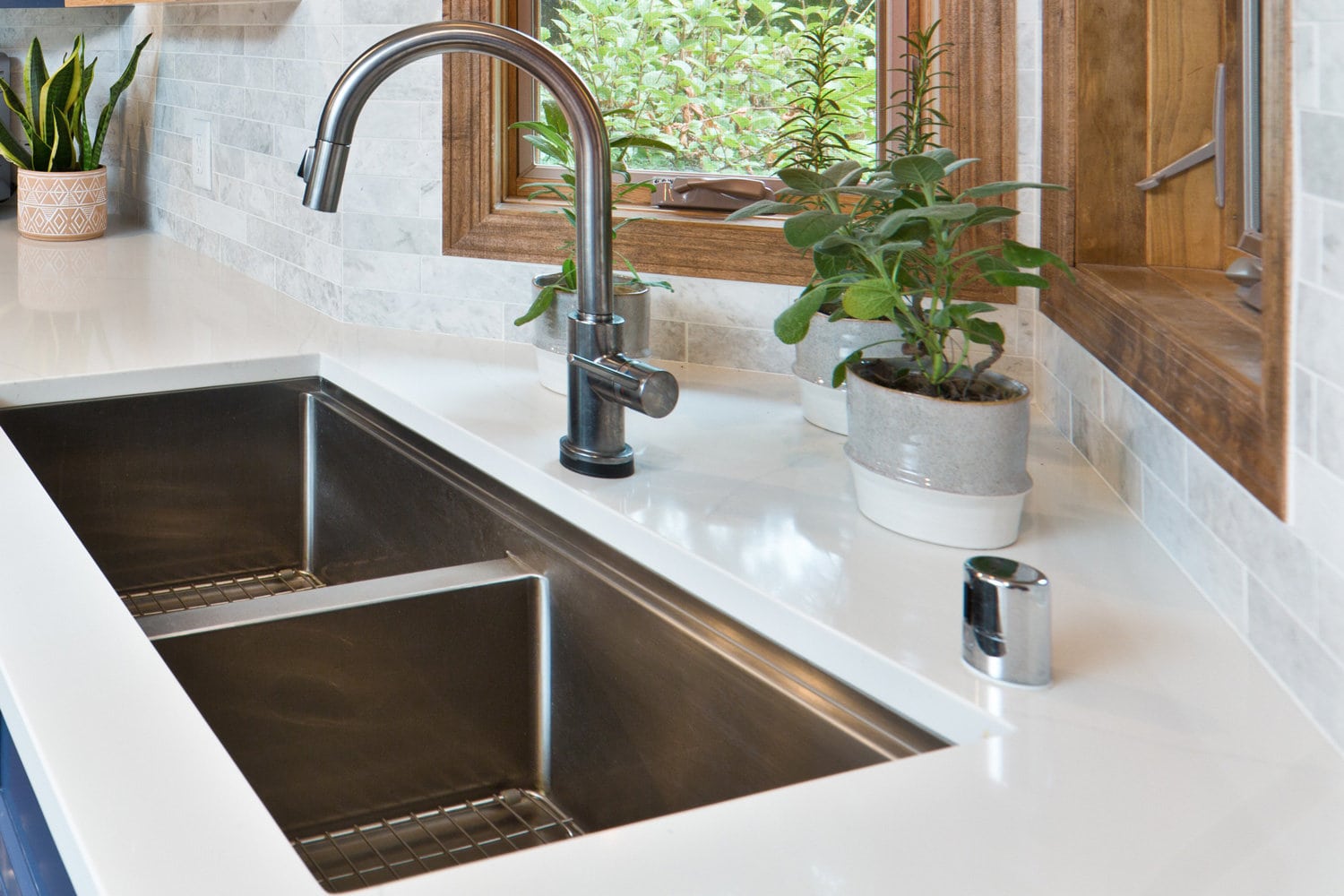
The air gap on your dishwasher is behind the sink where the faucet is. It is usually chrome-plated with a cylindrical shape.
An air gap is not a requirement, so not all kitchens have one. An air gap can serve as an alternative to a high loop. It prevents water from returning and clogging your dishwasher.
Check out this dishwasher air gap on Amazon.
In Closing
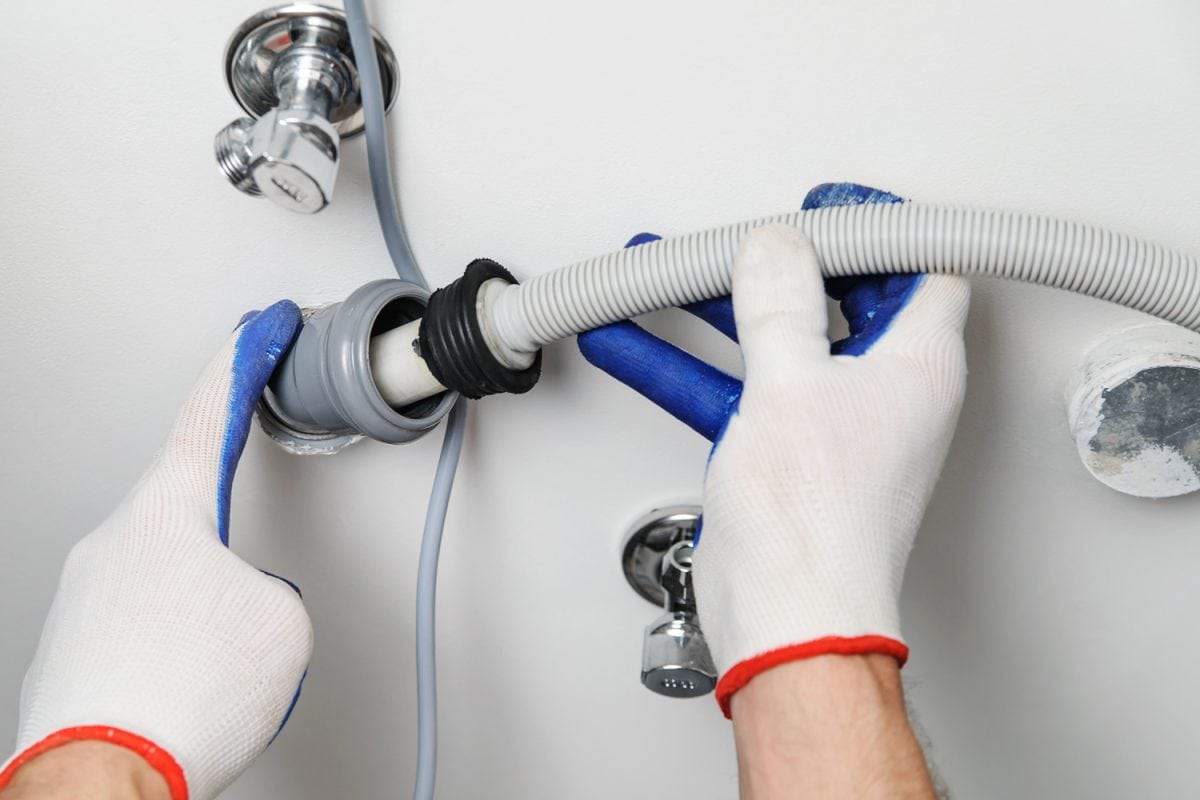
A dishwasher drain hose can kink to due the material its made of. It's flexible and smooth and can bend easily. The hose can also kink or clog because of crowded storage, loose connections, and water pressure.
These issues can damage your hose and result in the need for replacement. You should regularly check your dishwasher hose to make sure it's straight and free of clogs. If necessary, you should replace the hose to avoid more serious issues.
Find out more about maintaining your dishwasher drain hose in these posts:
Should I Be Able To Blow Through A Dishwasher Drain Hose?
How To Extend Dishwasher Drain Hose






